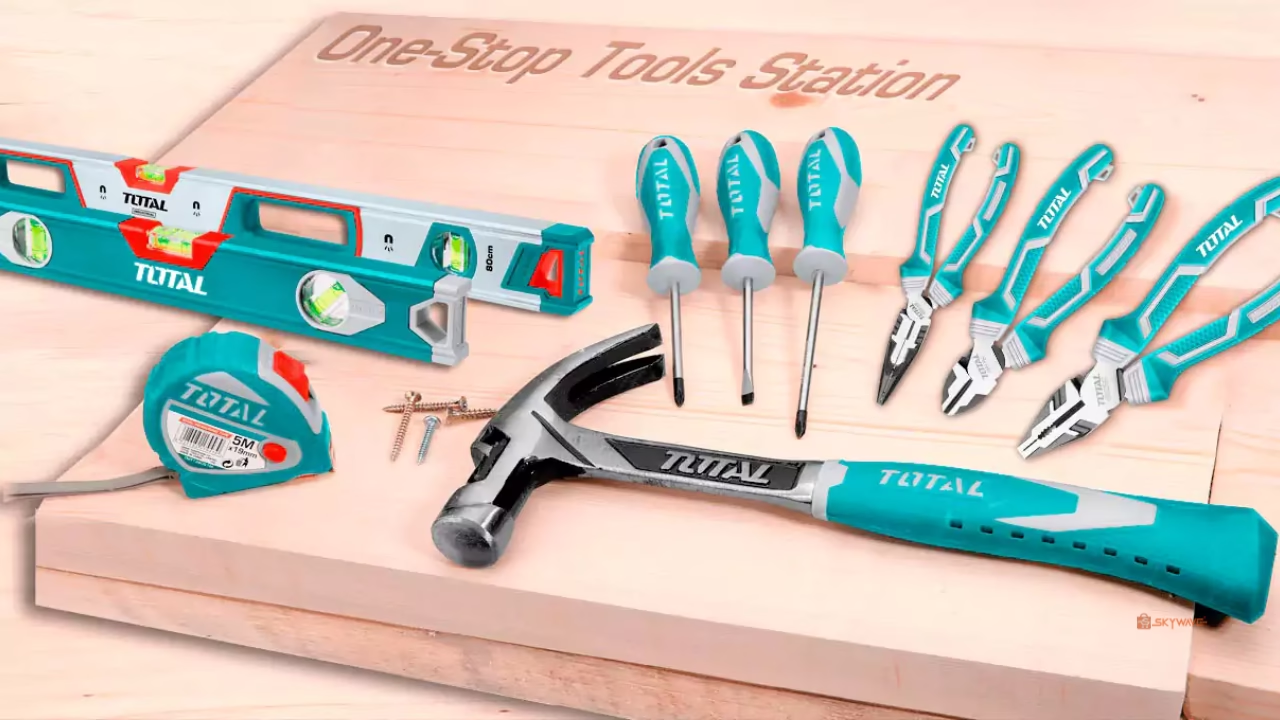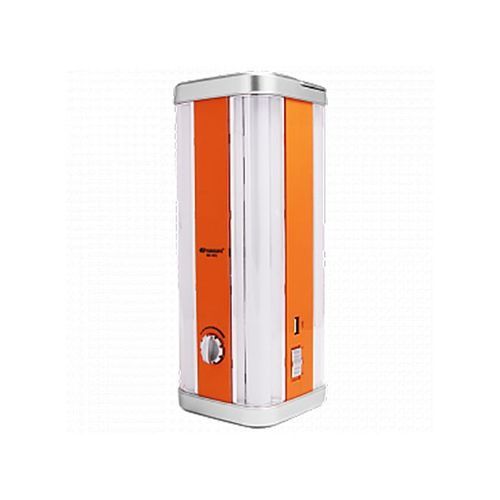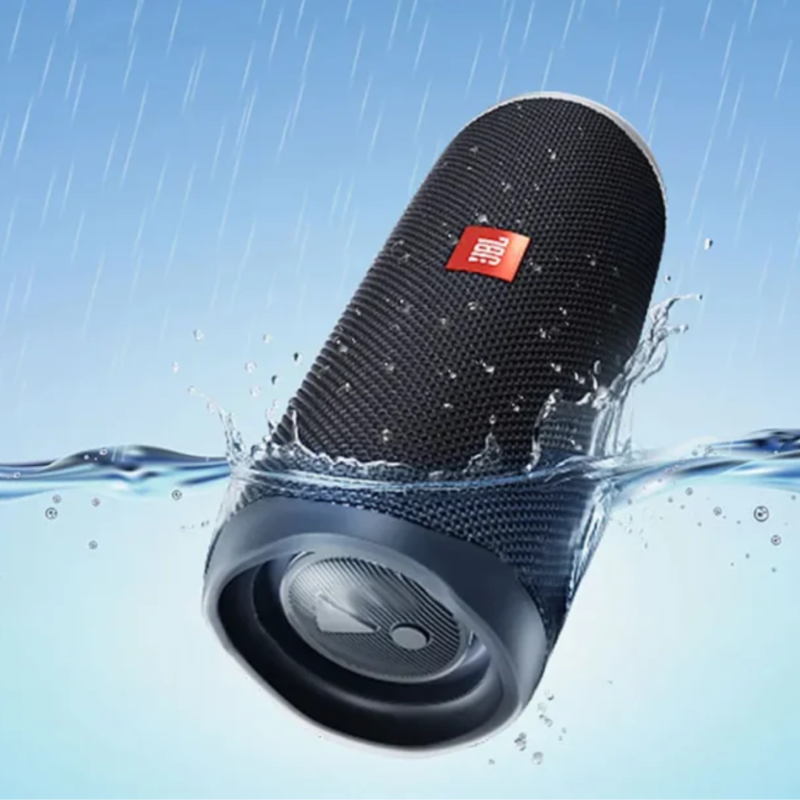The Ultimate Guide to Choosing the Perfect Microphone Stands
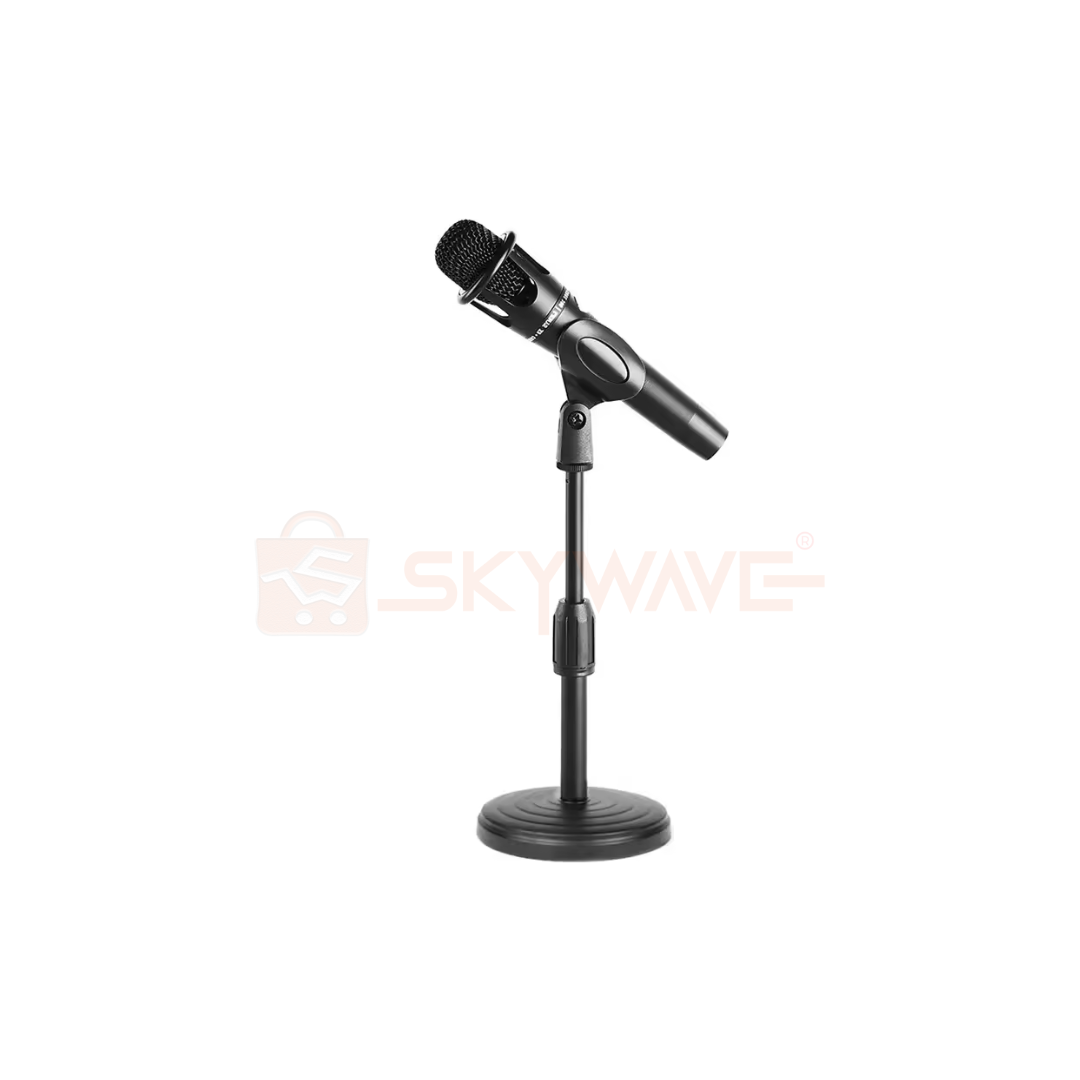
Introduction
Microphone stands are essential tools for anyone involved in audio production, be it for professional studio recordings, live performances, or home setups. The right microphone stand can significantly impact the quality of your recordings or live performances. In this article, we’ll explore the various types of microphone stands available, the benefits of having one, and how to choose the right one for your specific needs.
Types of Microphone Stands In Kenya
In Kenya, a variety of microphone stands are available to cater to diverse needs and preferences. Each type of microphone stand offers unique advantages, catering to specific use cases and environments. Understanding the distinct types of microphone stands and their unique features can significantly enhance your audio experience.
1. Flat Base Stands
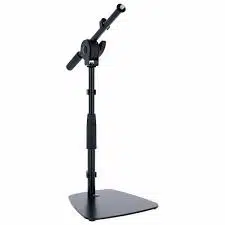
These stands are known for their stability and compact design. Typically used in studio settings, flat base stands provide a steady foundation for microphones, making them ideal for recording vocals or instruments. Their flat base minimizes the risk of tripping, which is particularly advantageous in cluttered environments. Additionally, flat base stands are easy to transport and store due to their minimalistic design.
2. Tripod Stands
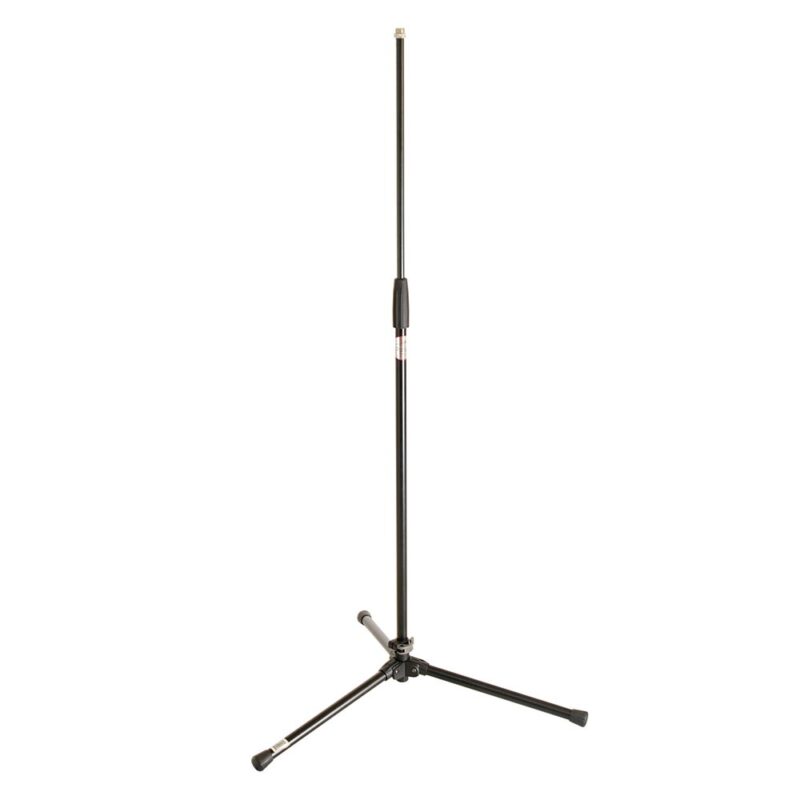
Tripod microphone stands are characterized by their three-legged base, offering excellent stability on uneven surfaces. These stands are versatile and commonly used in both live performances and studio recordings. Tripod stands often come with adjustable height and boom arms, allowing for flexible positioning to suit different recording scenarios. Their portability makes them a preferred choice for on-the-go musicians and sound engineers.
3. Table Top Stands
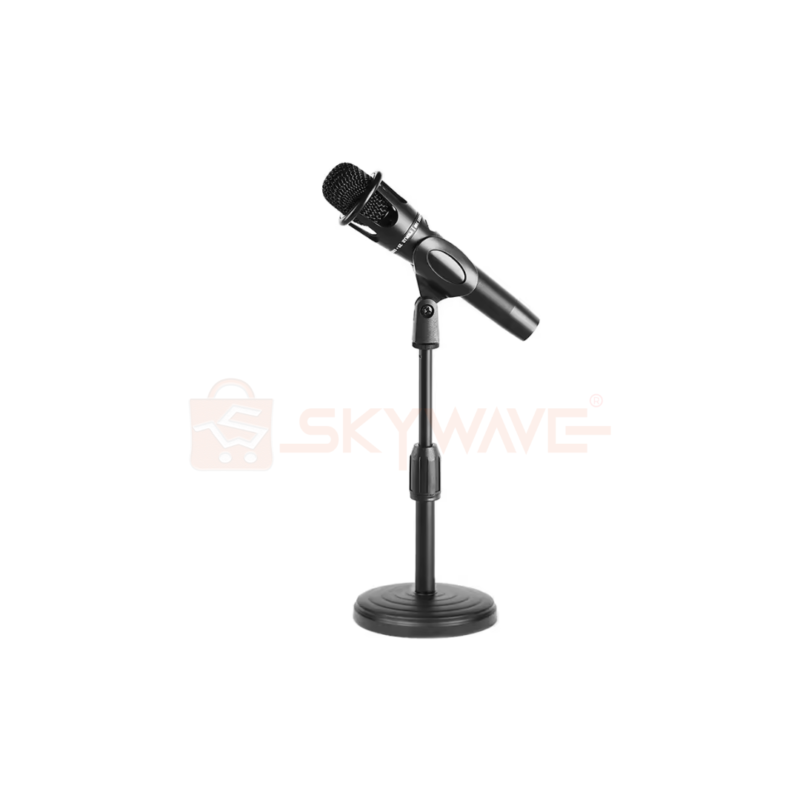
As the name suggests, tabletop stands are designed for placement on desks or tables. They are compact and perfect for podcasting, broadcasting, or any situation where space is limited. Tabletop stands typically have a short height and a stable base, making them convenient for close-up vocal recordings or interviews. Their small footprint ensures they do not occupy much space, making them ideal for home studios or office setups.
4. Boom Stands

Boom microphone stands feature an extendable arm that allows for versatile positioning of the microphone. These stands are excellent for capturing audio from different angles and heights without moving the base. Boom stands are widely used in studios, live performances, and broadcasting to record vocals, instruments, or overhead sounds. The flexible nature of boom stands makes them suitable for complex recording setups where precise microphone placement is crucial.
5. Round Base Stands
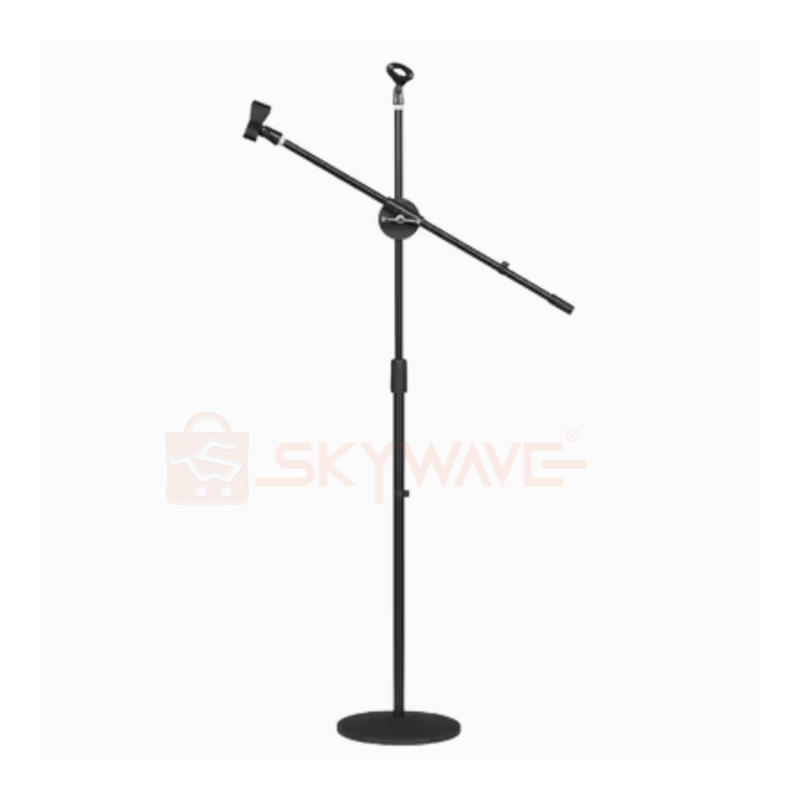
Round base stands are similar to flat base stands but with a circular base that provides additional stability. These stands are often used in live performances and public speaking events where stability is paramount. The heavy round base ensures the stand remains upright even when the microphone is adjusted frequently. Round base stands are known for their durability and are a reliable choice for various professional audio applications.
The Benefits of Using a Microphone Stand
Utilizing a microphone stand offers an array of benefits that significantly enhance both the quality of sound and the user’s comfort. Some of the benefits of having one include:
- A microphone stand minimizes handling noise, which is the unwanted sound generated when a microphone is physically held. This reduction in extraneous noise ensures a cleaner, more professional audio output. Furthermore, a stand allows for optimal microphone positioning, which is crucial for capturing the best sound possible. The ability to place the microphone at the correct distance and angle can make a substantial difference in the clarity and warmth of the audio.
- Ergonomically, microphone stands are indispensable, especially during extended periods of use. Holding a microphone for long durations can lead to strain and fatigue in the hands and arms. By using a stand, performers and speakers can maintain a natural and relaxed posture, reducing the risk of discomfort and potential injury. This is particularly important for musicians, public speakers, and broadcasters who require sustained vocal performance without the physical burden of holding a microphone.
- The professional appearance afforded by a microphone stand is another significant benefit. In both live performances and recording settings, the presence of a quality stand conveys a sense of professionalism and preparedness. It allows the performer to engage more freely with the audience and focus on their delivery without the distraction of managing the microphone. This polished look not only enhances the overall presentation but also instills confidence in both the performer and the audience.
In conclusion, investing in a quality microphone stand is a wise decision for anyone serious about their audio production or performance. The enhancement in sound quality, ergonomic benefits, and professional appearance collectively make a microphone stand an essential tool in any audio setup.
Factors to Consider When Choosing a Microphone Stand
When selecting a microphone stand, several crucial factors should be taken into account to ensure it meets your specific needs and preferences. These Factors Include:
1. Stability, Durability, and Portability
A stable microphone stand is essential to avoid any wobbling or tipping over, especially if you are using a heavy or valuable microphone. Look for stands with a sturdy base and solid construction materials. Portability is often a key concern, especially for those who travel frequently for gigs or recordings. Lightweight and foldable stands are ideal for easy transport and setup. However, it’s important to balance portability with stability to ensure the stand remains functional in various environments. Durability cannot be overlooked. A high-quality microphone stand made from robust materials like steel or high-grade aluminum will last longer and withstand regular use. Check for any weak points in the construction that could lead to premature wear and tear.
2. Adjustability
Adjustability is another important aspect. Depending on your use case—whether you are performing on stage, recording in a studio, or giving a speech—you may need a stand that can be easily adjusted in height and angle. Telescoping features and flexible boom arms can add significant versatility to your setup.
3. Weight and size
Additionally, consider the weight and size of your microphone. Some stands are designed to support heavier microphones, while others are better suited for lighter models. It’s crucial to match the stand’s specifications with your microphone to ensure optimal performance. The environment where the stand will be used also plays a role. For instance, a stand used in a studio setting may have different requirements compared to one used on a live stage. Noise isolation features and cable management systems can be beneficial in a recording environment.
4. Personal Preferences and Budget
The amount you are willing to spend on microphone stands will determine the type of microphone stand to choose. Knowing your budget will help you focus on microphone stands that are within that range. Lastly, consider your personal preferences regarding ease of setup and use. Quick-release mechanisms and intuitive adjustment knobs can make your experience more seamless and enjoyable.
Conclusion
Choosing the right microphone stands can make a significant difference in your audio setup. Whether you’re recording in a studio or performing live, there is a stand that suits your needs. Asking yourself practical questions like “Will I need to move this stand frequently?” or “What type of microphone will I be using?” can help narrow down your options. By carefully evaluating these factors, you can choose the microphone stand that best fits your needs and enhances your overall performance or recording experience.

